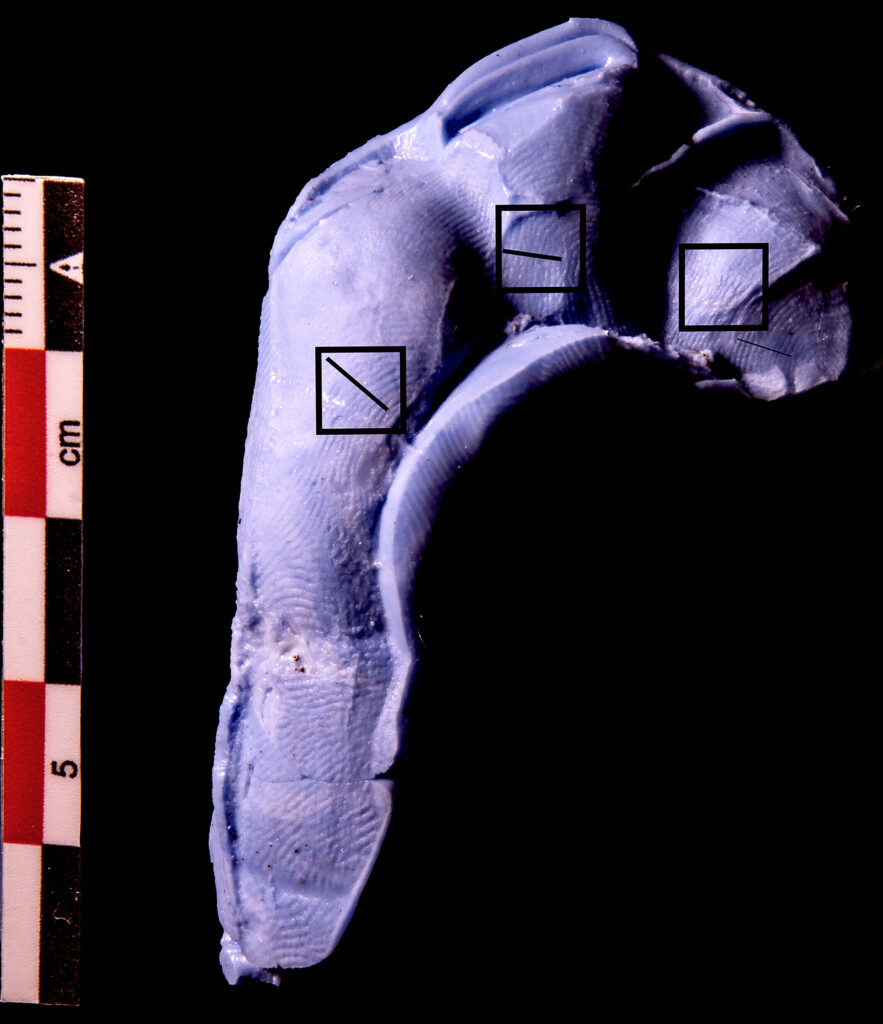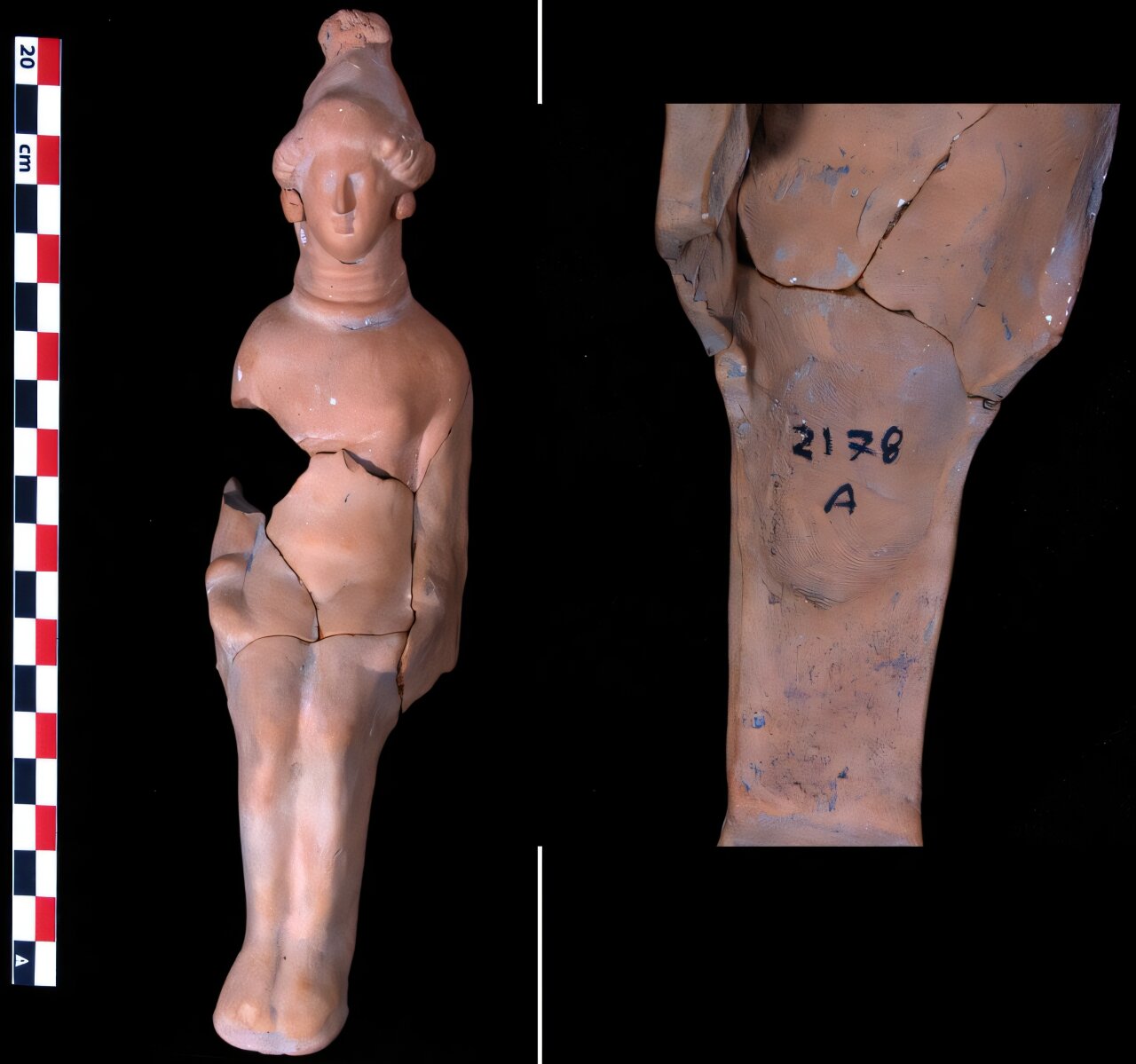A fascinating and groundbreaking study by Ph.D. student Leonie Hoff from the University of Oxford, recently published in the Oxford Journal of Archaeology, unveils how ancient fingerprints preserved on terracotta figurines provide compelling clues about the age, sex, and potential roles of the makers involved in their production. This research offers a rare glimpse into the lives of the artisans of Thonis-Heracleion, an ancient Egyptian port city that flourished between the seventh and second centuries BCE, shedding new light on a profession that has remained largely mysterious for centuries.
Thonis-Heracleion, located near the Canopic mouth of the Nile, was an influential trading hub during the Saite and Ptolemaic periods. This strategic location allowed the city to regulate trade routes and serve as a key point of connection for migrants, particularly from Greece. However, following the establishment of Alexandria, Thonis-Heracleion began to decline and was eventually lost to history. Rediscovered by archaeologists in the 1990s, the city has provided a treasure trove of archaeological findings, including more than 60 terracotta figurines. Among these, nine figurines have preserved clear and identifiable fingerprint impressions, which were analyzed in Hoff’s study.
What makes Hoff’s research especially intriguing is the innovative use of Reflectance Transformation Imaging (RTI) technology, a cutting-edge technique that captures minute details of surface texture through varying light angles. This allowed Hoff and her team to carefully examine the fingerprints left on the terracotta figurines, a type of imprint that had rarely been studied in ancient artifacts. By employing this sophisticated technology, Hoff was able to analyze and compare these ancient prints with those of modern Egyptian populations, revealing previously unknown details about the creators of these figurines.
The Art of Figurine Making in Ancient Egypt
The terracotta figurines recovered from Thonis-Heracleion offer vital evidence of the craftsmanship employed by artisans in ancient Egypt. Figurine-making was an integral aspect of Egyptian culture, with figures used for various purposes, including religious rituals, offerings, and domestic use. Traditionally, figurines in Egypt were created using Nile silt, a material that, while abundant, was coarse and ill-suited for intricate detail. However, over time, craftsmen refined their techniques and began using finer clay to produce more detailed and delicate figurines, some of which rivaled the artistic standards of Greek sculpture.
The question of who exactly produced these terracotta figurines has long been shrouded in mystery. Historically, the Greek term “koroplathos” was used to describe the profession, a word that implies a connection to male artisans. Derived from the Greek verb “plásso” (to mold) and “kóros” (boy/doll), the word suggests that figurine-making was a male-dominated profession. In ancient Egypt, however, little is known about the gender or age of those involved in figurine production. Hoff’s research, based on fingerprint analysis, challenges some of these assumptions and provides new insights into the roles that men, women, and even children may have played in the creation of these objects.
Analyzing Ancient Fingerprints: Age and Sex Determination
Hoff’s study focuses on the ridge density and breadth of fingerprints to determine the age and sex of the artisans responsible for the figurines. Ridge density, which refers to the number of epidermal ridges per unit area, is a key characteristic used in fingerprint analysis. In Hoff’s research, she found that female fingerprints typically exhibit more densely packed ridges compared to those of males. By comparing the ridge patterns of the ancient prints with those of modern Egyptian populations, Hoff was able to identify gender distinctions between the makers of these figurines.
In addition to sex, Hoff also used ridge breadth—essentially the width of the ridges—to estimate the age of the individuals who left the fingerprints. Children typically have narrower ridges than adults, which allowed Hoff to classify the prints as belonging either to children/sub-adults or to adults. The analysis also accounted for the shrinkage of clay as it dried, ensuring that the measurements were as accurate as possible.
Interestingly, Hoff’s study revealed that both males and females were involved in figurine production, challenging the assumption that this was a strictly male profession. Although the Greek etymology of the word “koroplathos” suggested a male-dominated craft, Hoff’s findings indicate that women participated in the creation of figurines, particularly local Egyptian styles, which suggests a more gender-inclusive practice than previously believed.

The Role of Children in Figurine Production
One of the most surprising discoveries from Hoff’s research was the significant involvement of children in the production of figurines. Initially, Hoff was taken aback by the clear evidence of children’s fingerprints, but upon reflection, the involvement of young individuals in such crafts made sense. In many cultures, children have traditionally assisted in pottery and figurine-making, particularly with tasks that do not require the skill of a master artisan, such as pressing clay into molds. Ethnographic studies across cultures have provided evidence that children have historically been involved in crafting activities, and this was no different in ancient Egypt.
Hoff’s analysis revealed that children’s fingerprints were found in both Greek import figurines and those of Egyptian origin. However, children were never responsible for making complete figurines on their own. Instead, they were likely tasked with pressing the wet clay into molds, a task suited to their smaller hands. Older adults, likely more experienced artisans, would then complete the figurine by removing the clay from the mold and fixing the two halves together. In fact, Hoff’s study found that children’s fingerprints were typically only found within the figurines, while adults’ prints could be found both within and outside the figurine, including along the base. This indicates that adults took a more active role in completing the figures and ensuring their quality.
Another striking difference between Egyptian and Greek figurine production came to light through the study. In Egypt, children were generally paired with supervisors who were close to their age, likely creating a more collaborative environment in which the apprentice learned alongside a peer. In contrast, Greek figurine-making seemed to follow a more hierarchical structure, with older supervisors overseeing younger apprentices. This divergence in training practices highlights the cultural differences in how craft skills were transmitted from one generation to the next.
New Insights into Ancient Egyptian Life
Although Hoff’s study is based on a relatively small sample size, it has the potential to revolutionize our understanding of ancient Egyptian life, especially when it comes to the roles played by different age groups and genders in artisanal production. While the precise identities of the figurine-makers cannot yet be determined due to the fragmentary nature of the figurines and the lack of uniformity in dating, Hoff’s research provides a valuable framework for studying these ancient artisans.
With a deeper understanding of the demographic profiles of these makers, we can begin to piece together a more detailed and nuanced picture of ancient Egyptian society. Who were these artisans? What were their social statuses? And how did their work contribute to the larger cultural and economic landscape of Thonis-Heracleion? These are questions that Hoff’s research begins to address, but they also point to the need for further studies and excavations to gather more material for analysis.
As Hoff herself points out, the terracotta material from Thonis-Heracleion remains limited, and more finds are necessary to enhance the scope of her study. Nonetheless, the data gleaned from this initial analysis already offer a compelling glimpse into the lives of ordinary Egyptians, providing a rare opportunity to explore the intimate details of daily life in the ancient world.
Conclusion
Leonie Hoff’s study is a pioneering work that uses cutting-edge technology to analyze ancient fingerprints on terracotta figurines, offering new perspectives on the gender and age of artisans in ancient Egypt. Through the careful examination of ridge density and breadth, Hoff has challenged long-held assumptions about figurine-making as a predominantly male profession, revealing that both men and women participated in the craft. Furthermore, the involvement of children in the production process highlights the collaborative nature of this ancient work and offers valuable insights into how skills were passed down through generations. As archaeological efforts continue at Thonis-Heracleion, Hoff’s research promises to unlock even more secrets about the lives of the people who once inhabited this vibrant ancient port city.
